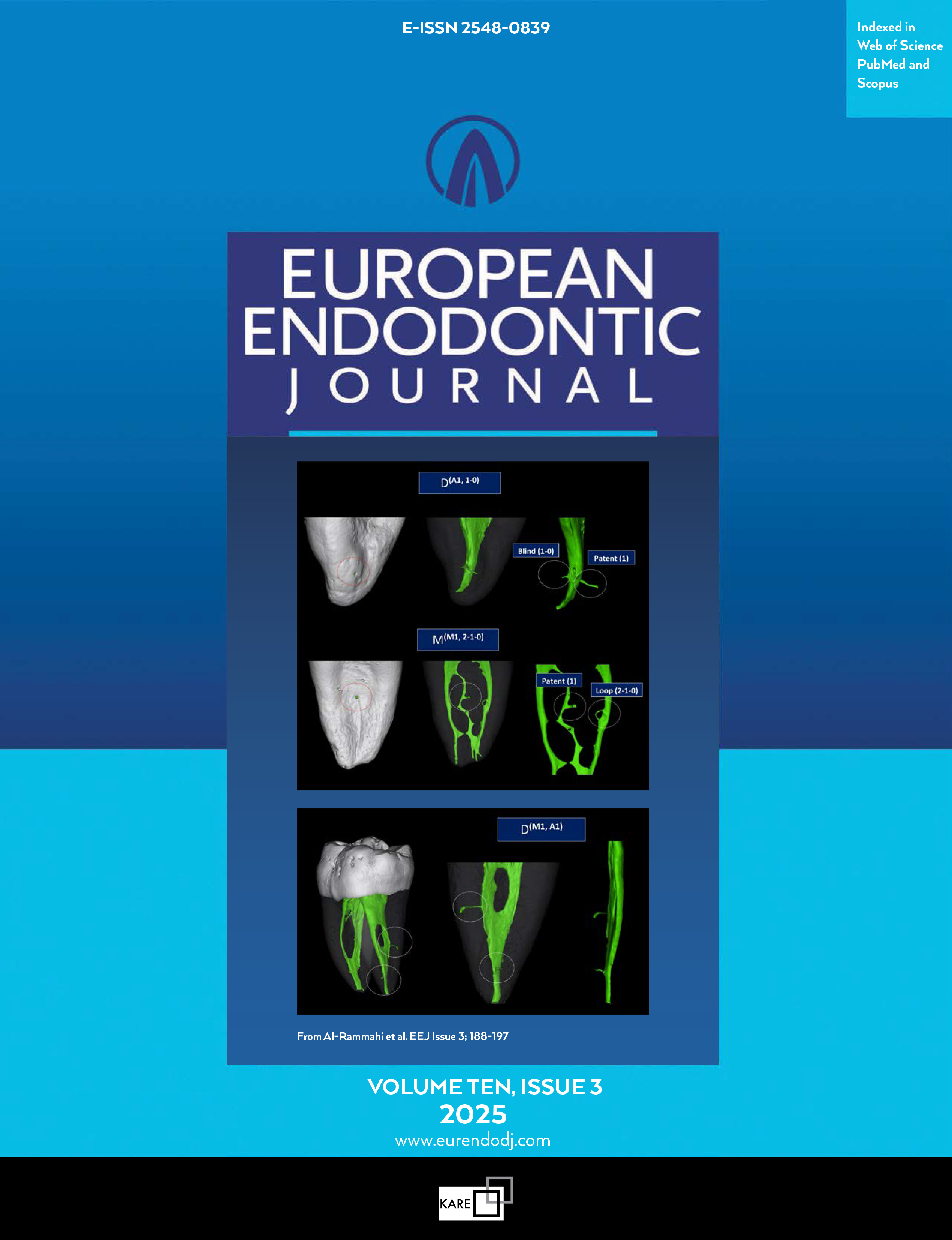Metrics
2024 IMPACT FACTOR
5 year Impact Factor
Eigenfactor Score
2024 CiteScore
Journal Citation Reports
(Clarivate 2025, JIF Rank)
File Breakage in Conventional Versus Contracted Endodontic Cavities
Donald K. Mauney Iii1, Antheunis Versluis2, Daranee Tantbirojn3, Harry T. Cosby1, Jeffrey G. Phebus11Department of Endodontics, University of Tennessee Health Science Center, College of Dentistry, Tennessee, USA2Department of Bioscience Research, University of Tennessee Health Science Center, College of Dentistry, Tennessee, USA
3Department of General Dentistry, University of Tennessee Health Science Center, College of Dentistry, Tennessee, USA
Objective: To compare rotations to failure and tip separation length of a nickel-titanium (Ni-Ti) rotary in- strument within a simulated mesio-buccal canal of a mandibular molar with a conventional or contracted endodontic cavity.
Methods: Two identical lithium disilicate #30 crowns were milled. A conventional or contracted endodontic cavity was prepared. A custom glass tube was fabricated with taper and length replicating a mesio-buccal canal, including buccal and lingual curvature, and placed at the mesio-buccal orifice of each crown, held in a silicone mold. Instrumentation was simulated using 30/.04 Ni-Ti rotary files following manufacturer recommended 1.8 Nm torque and 500 RPM (n=20 per access type). Instrumentation was video recorded to determine time (sec- onds) and rotations to failure. The length of broken tips was measured. The experimental data were compared using a t-test (significance level 0.05). Stresses in the instruments were examined using finite element analysis.
Results: Number of rotations to failure (mean±standard deviation) was 599±126 for conventional and 465±65 and for contracted access; tip separation lengths (mean±standard deviation) were 3.99±0.29 for conventional and 4.90±1.02 mm for contracted access. Number of rotations to failure and tip separation lengths were signifi- cantly different between the two access openings (p<0.001). Finite element analysis confirmed higher file curva- ture and accompanying higher stress levels with contracted access and the maximum stress further from the tip.
Conclusion: Within the limitations of this study, the contracted access caused earlier failure of the Ni-Ti in- strument with longer tip separation lengths than the conventional access due to higher stresses towards the middle section of the instrument. (EEJ-2022-11-143)
Manuscript Language: English
(651 downloaded)


